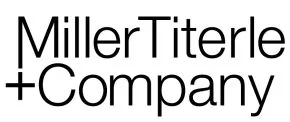Hello and welcome back to Miller Titerle's ongoing saga on the legislative changes that could affect you or your business! After a lengthy delay resulting from budget issues, casting disputes and a global pandemic that seems like something out of a sci-fi movie, we are proud to unveil Part V – A New Scope, which details additional amendments to the Canada Labour Code. If you need a refresher on other legislative changes, check out the earlier entries in our series here.
A New Scope: Canada Labour Code and the Work Place Harassment and Violence Prevention Regulations
Federally-regulated employers take note - the federal government recently announced that the new Work Place Harassment and Violence Prevention Regulations ("Regulations") under the Canada Labour Code ("CLC"), which we previously commented on here, are scheduled to take effect January 1, 2021. The new stand-alone Regulations will replace the workplace violence prevention provisions currently under Part XX of the Canada Occupational Health and Safety Regulations as well as the sexual harassment provisions under Part III of the CLC. Portions of two other regulations that include violence prevention provisions will also be repealed, creating a unified regime for preventing, responding to and addressing complaints of workplace violence and harassment in all its forms for all federally-regulated workplaces.
The combined definition of harassment and violence under the Regulations has been expanded to:
"any action, conduct or comment, including of a sexual nature, that can reasonably be expected to cause offence, humiliation or other physical or psychological injury or illness to an employee, including any prescribed action, conduct or comment."
Although the Regulations are not in force until January 1, 2021, federally-regulated employers should take steps now to review and update their practices and policies to ensure compliance. The primary new elements of the Regulations require employers to:
- Identify or designate a person to whom complaints may be addressed if not addressed to the employer (the "Designated Recipient").
- Work with an "applicable partner" (typically a health
and safety committee) to jointly:
- develop a workplace harassment and violence prevention policy, which must include enhanced privacy protections to encourage employees to raise their concerns;
- conduct a workplace assessment that identifies risk factors related to harassment and violence in the work place;
- develop and implement preventive measures to protect the work place from the identified risks within six months of the assessment;
- develop and implement emergency procedures to address occurrences that pose an immediate danger;
- identify or develop harassment and violence training, and deliver it at least every three years; and
- review the workplace assessment at least every three years and update if necessary.
- Make information available respecting support services for employees;
- Respond to complaints of workplace violence and harassment within seven days;
- Maintain various records, including of complaints and actions taken in response.
The Regulations also outline a specific resolution process for employers to follow in the case of complaints of workplace violence and harassment, which includes options for a negotiated resolution, conciliation and investigation. While negotiated resolution and conciliation are more flexible, an investigation involves specific requirements regarding the qualifications of an investigator, how they may be appointed, the report the investigator must submit and how the employer will handle it, including privacy considerations. Importantly, the requirements around who may serve as an investigator may require an employer to engage a third party to conduct an investigation.
Want More?
The Regulations implement more rigourous and defined demands regarding the processes, training and policies required of federally-regulated employers to prevent, respond to and address complaints of workplace violence and harassment. If you have any questions about the requirements under the Regulations or your workplace's compliance.
The content of this article is intended to provide a general guide to the subject matter. Specialist advice should be sought about your specific circumstances.



